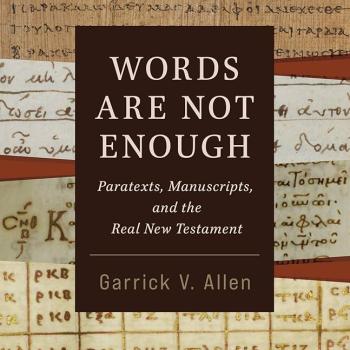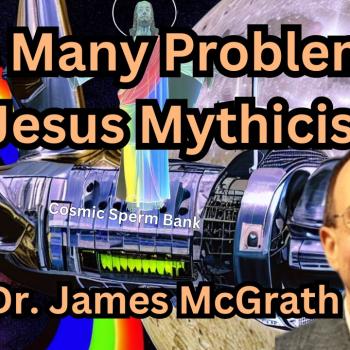This is the second part of my blog review of A Hitchhiker’s Guide to Jesus by Bruce N. Fisk, the first installment of which I posted yesterday. For more about the blog tour of which this is a part, visit the blog tour web site.
Norm’s adventure begins on an airplane, and with a great opening line. All throughout the book, Norm is in conversation with others, and as professors we know the importance of conversation. There is a danger, however, that we may forget that our students’ conversations about the subjects we teach, and aspects of their experience relevant to the standpoint from which they view the course material, stretch far beyond the classroom. And so the fictional main character of A Hitchhiker’s Guide to Jesus reminds us that students pondering these subjects may be in conversation not only during small groups in class, but in their dorms and even in their churches. They may worry about what a parent will think if they change their mind about something related to the Bible or Jesus – or may simply worry about a parent who is ill. Norm’s journey serves as a helpful reminder of the fact that we all “see from somewhere” in a way that is not merely an abstract principle but a concrete example. And while some of us may try to stick to “just the facts” in our teaching, and not teach in a way that privileges any particular religious perspective or even a religious perspective at all, many of our students will still be interested in whether it is possible to both study and follow. Fisk puts it this way: “Norm…refuses to choose between curiosity and conviction” (p.7). But Norm himself puts it better: “Could I be rigorously honest with the evidence and thoughtfully faithful to the tradition?” (p.16).
Norm is not someone who is being challenged only by relatively conservative scholarship. He has read Bultmann, and emphasizes that he was not some skeptical outsider but a churchman concerned with the expression of Christian faith in his time. In a dream sequence Norm interacts with Jimmy Dunn, Scot McKnight, John Meier, John Dominic Crossan, and the ghost of Ben Meyer. One interesting aspect of such interactions is the disclaimer Fisk offers about them in prologue, emphasizing that these are not their words, but what he would hopefully legitimately expect they might say – alluding intentionally or otherwise to Thucydides’ famous statement about his speeches. Norm wrestles with the question of whether fact and fiction can always be distinguished (even discussing mythicism for a bit!) and what the implications are if we cannot always disentangle them.
The layout of A Hitchhiker’s Guide to Jesus is another nice aspect of the book. It includes snippets of Norm’s notebook and many post-it notes (no, not really post-it notes actually stuck on the book, but pictures of post-it notes with quotations or other useful tidbits). We sometimes get to look over Norm’s shoulder at his annotated copy of Pliny’s letters, or at his notebook in which he writes out parallel passages from the Gospels and discusses similarities and differences (the text is in fact typed, so legibility of handwriting is not an issue in such instances).
The book is full of humor, and its bibliography features an entry for Bob Dylan next to that for James D. G. Dunn, and one for Monty Python next to that for Jerome Murphy-O’Connor. If that doesn’t tell you something about the book that is important, I don’t know what will. It is engrossing, entertaining, and at times humorous, while still managing to communicate crucial information about and explore in a serious manner key aspects of the historian’s quest for the historical Jesus.
This is the second installment of my blog review of A Hitchhiker’s Guide to Jesus. More is still to follow!













